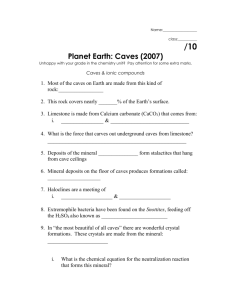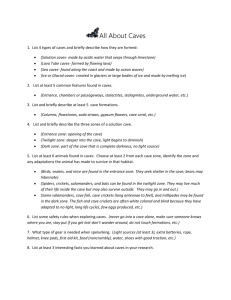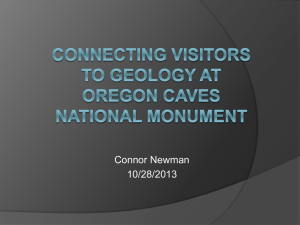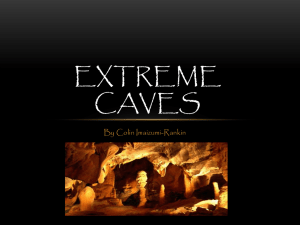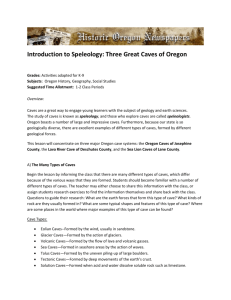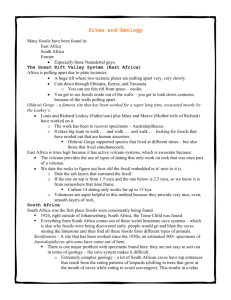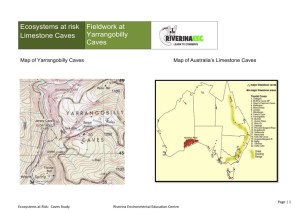geology course project
advertisement
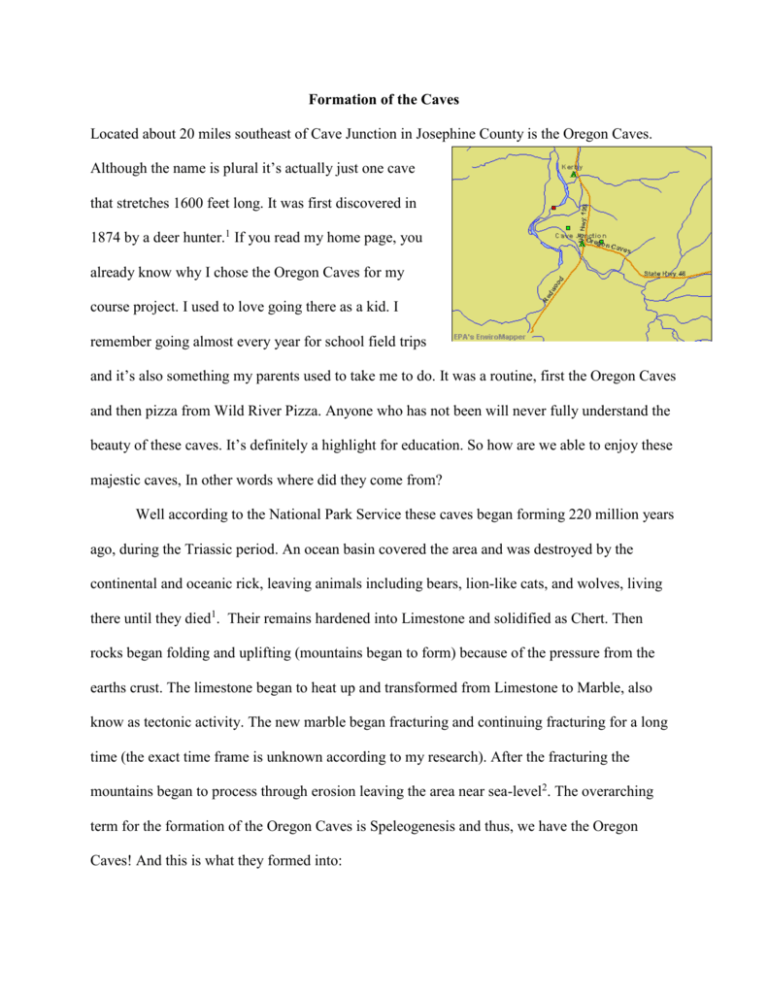
Formation of the Caves Located about 20 miles southeast of Cave Junction in Josephine County is the Oregon Caves. Although the name is plural it’s actually just one cave that stretches 1600 feet long. It was first discovered in 1874 by a deer hunter.1 If you read my home page, you already know why I chose the Oregon Caves for my course project. I used to love going there as a kid. I remember going almost every year for school field trips and it’s also something my parents used to take me to do. It was a routine, first the Oregon Caves and then pizza from Wild River Pizza. Anyone who has not been will never fully understand the beauty of these caves. It’s definitely a highlight for education. So how are we able to enjoy these majestic caves, In other words where did they come from? Well according to the National Park Service these caves began forming 220 million years ago, during the Triassic period. An ocean basin covered the area and was destroyed by the continental and oceanic rick, leaving animals including bears, lion-like cats, and wolves, living there until they died1. Their remains hardened into Limestone and solidified as Chert. Then rocks began folding and uplifting (mountains began to form) because of the pressure from the earths crust. The limestone began to heat up and transformed from Limestone to Marble, also know as tectonic activity. The new marble began fracturing and continuing fracturing for a long time (the exact time frame is unknown according to my research). After the fracturing the mountains began to process through erosion leaving the area near sea-level2. The overarching term for the formation of the Oregon Caves is Speleogenesis and thus, we have the Oregon Caves! And this is what they formed into: Sounds easy enough, right? Well if you’re like me and this is your first real science class since high school, that doesn’t make a lot of sense. So let’s break it down. Thanks to the National Park Service we have these very handy diagrams to help us through it. The first diagram is showing the beginning of the process, which started 220 million years ago, give or take a couple years. It shows the original ocean basin being pulled apart by the continental and oceanic rock. The second diagram is showing the formation of the marble mountains aka the Siskiyous and also shows the different rocks that are there. Gray is Basalt, Pink is the quartz diorite, and the white is the marble3. Speleothems Speleothems are mineral deposits formed from groundwater within underground caverns. Also known as formations, these deposits can’t form until there is an opening in the cave. There are two different processes that create Speleothems. The first process involves evaporating the water and leaving behind the minerals. This first process is the reason that there must be an opening for Speleothems to form. It mainly happens near the front of the caves and if you’ve ever been on an Oregon Cave tour you know it as cave popcorn. The second process is when the water that comes through the caves loses Carbon Dioxide. When the water originally enters the rocks, it’s under a lot of pressure, but after it’s entered the pressure is reduced and that’s how the Carbon Dioxide is released (More details in the photo below). This causes the water to be saturated in Calcite and is the slower of the two processes but still the most common4. I think what’s more interesting is that Speleothems are a way to tell what kind of climate conditions existed in the past5. Kind of like the rings on a tree tell you how old a tree is. Other popular formations include Columns, Stalactites, Stalagmites, Cave popcorn, Rimstone dams, flowstone, cave ghosts, boxwork, and Moonmilk. Not Your Average Limestone Cave A cave cannot form without a large amount of Limestone. The Oregon Caves are formed by marble, which is a recrystallized form of Limestone. This recrystallized Limestone was initiated along with cracks and joints until the pockets were formed and turned into what you see today which is different “rooms” or caverns. The water level that had once filled the caverns varied depending on the stream. When streams deepened, the water level was lower causing the caverns to drain. It’s found that the water did slightly affect the patterns in the cave. The areas containing water can be split into two zones. The upper zone, also known as aeration, are rocks that are cracked because they were filled with air most of the time. The lower zone, also know as phreatic, also contains the same rocks but instead the cracks are filled with water2. These different zones help us understand the different cave formations because most caves have a two-step process in each of these zones. The first step is excavation, which is when the rocks lie beneath the water table. The second step happens when the water table is lower which allows air to enter and brings mineral matter to the rooms and galleries. This is also relevant to speleothems and helps with the understanding of the process in which Carbon Dioxide leaves water2. But let’s get back to the marble cave idea, I mean it’s pretty cool that only 3 caves in the United States are made of marble and one of them is here in Oregon (and the only one located in Oregon). Besides Limestone and Marble, igneous and sedimentary rocks are also found inside and outside the cave. The picture below is of rocks found in the Oregon Caves. There many different types of rock found here, but according to the National Park Service the top 6 in the world are found in the Oregon Caves and a myriad of Calcite formations decorate the cave3. Because of the minerals and marble in the caves it makes the Cave very fragile. While in the cave they ask you not to touch the stalagmites, columns, etc. because they could break due to the oils in human skin. But due to the amount of people that go in and out, small pieces of those people are left behind, including clothes, hair, etc. This is dangerous to the Caves. According to staff at the Oregon Caves, “Approximately 50,000 visitors to the cave a year leave behind tiny bits of clothing fiber, hair and trash. Over time, lint builds up and can disturb the cave ecosystem.” References 1Textbook, page 131 2http://archive.org/stream/oregoncavesnatio00evan/oregoncavesnatio00evan_djvu.txt 3http://www2.nature.nps.gov/geology/parks/orca/ 4http://www.nps.gov/orca/naturescience/speleothems.htm 5http://www.ncdc.noaa.gov/data-access/paleoclimatology-data/datasets/speleothem


